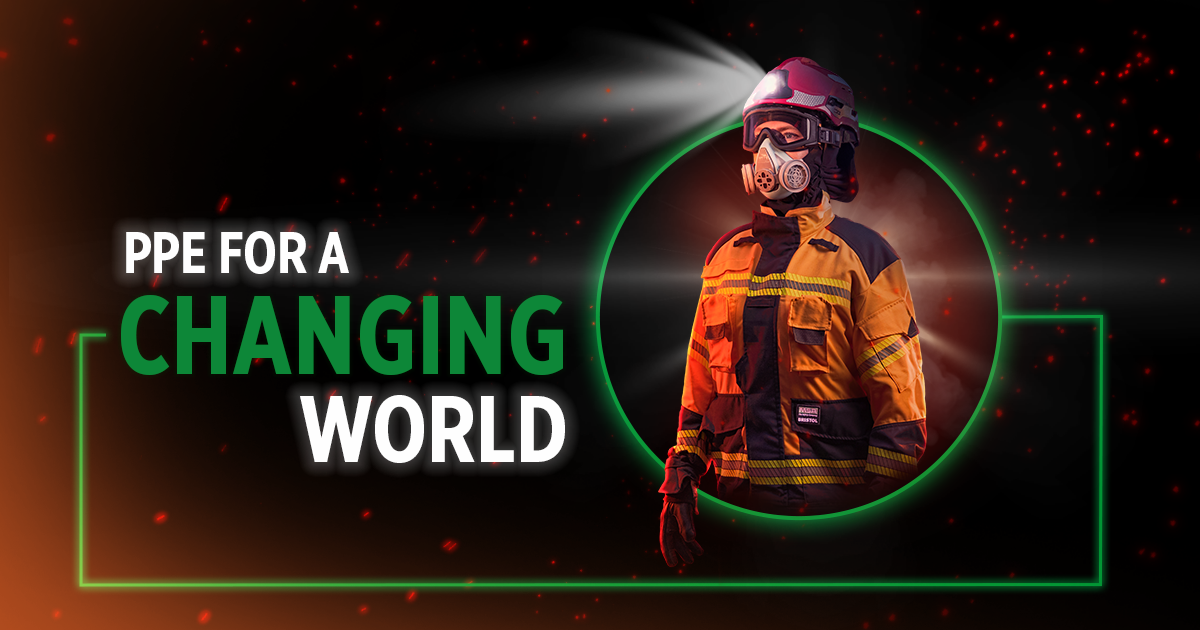
In the realm of emergency response, adaptability is key. Firefighters face a multitude of unpredictable scenarios, such as technical rescue missions and wildland firefighting. In such dynamic environments, having the appropriate protective gear to suit a given situation can make a big difference. That’s where innovative approaches to PPE come into play, offering flexibility and peace of mind to first responders as they navigate different challenges.
The world around us is changing rapidly. With the global population on the rise, some believe that more people now live in earthquake-prone regions [1], increasing the demand for urban search and rescue missions. Meanwhile, the surge in electric vehicles [2] poses increased risks of arc flash injuries during road traffic interventions. Many scientists are concerned that climate change further exacerbates the situation, with extreme weather events like cyclones, hurricanes, and floods becoming more frequent and severe [3]. As wildfires rage year-round in some regions [4], firefighters find themselves in prolonged and hazardous interventions, so they should consider whether they require PPE that is optimised for extended wear in hot environments. Rising water levels and more extreme weather conditions, such as sudden and heavy rainfalls onto dry, non-absorbent land affected by climate change, also heighten the risk of flooding [5], which may necessitate waterproof and breathable gear for water-related missions.
With wildfires increasing in frequency and intensity due to climate change and human activity [6], specialised protective equipment for wildland firefighting is more important than ever. The single-layer MSA Bristol X4 Wildland garment is a testament to this necessity. Designed for long-duration interventions in hot environments, it offers lightweight comfort to help firefighters where wearing a structural suit could be too inefficient. Its unique design features, from underarm gussets for enhanced heat transfer to double-bottom layer reinforcements for rugged environments, reflect the need for duty-specific garments during intense interventions.
Similarly, the MSA Bristol X4 TRW-Hybrid (Technical Rescue Wildland Hybrid) suit caters to the evolving demands of technical rescue teams and wildland firefighters alike. With a convertible design, it seamlessly transitions from technical rescue to wildland firefighting requirements, offering versatility without compromising on performance. Equipped with premium materials and a range of features, including a removable moisture barrier which offers additional protection against blood-borne pathogens and durable water resistance, it helps provide the level of protection needed for diverse emergency scenarios.
Head protection is paramount in any emergency response scenario. The GALLET F2XR helmet offers a multipurpose solution that is tested and certified for various applications, including wildland firefighting, technical rescue, and water rescue. Its intelligent design allows for seamless integration of accessories, ensuring firefighters can adapt to changing environments with ease.
For comprehensive protection, MSA also offers Advantage Respirators, which easily integrate with other PPE. Available in half- and full-face masks, with single thread and bayonet twin connection, these respirators safeguard against various hazards, from solid and liquid substances to toxic gases and carcinogenic particles.
As the world continues to change, so must our approach to emergency response. By investing in innovative PPE solutions like those offered by MSA Safety, we empower firefighters to navigate unpredictable environments with confidence and resilience.
Bristol Uniforms is now part of the MSA family, enhancing the breadth and quality of our fire protective clothing offerings and strengthening our commitment to providing firefighters worldwide with reliable protection against evolving challenges.
To find out more about the MSA Bristol range, visit www.msasafey.com/msa-bristol.
Sources:
1. Is earthquake activity increasing? | April 2019 (no date) British Geological Survey (BGS). Available at: https://www.earthquakes.bgs.ac.uk/research/earthquakeActivity.html
2. Marché de la voiture électrique : En pleine expansion dans le monde (2020) Elite Auto. Available at: https://www.elite-auto-actu.fr/actualite-auto/auto-electrique-hybride/2020/07/20/marche-de-la-voiture-electrique-en-pleine-expansion-dans-le-monde/
3. Earth’s changing climate (no date) National Geographic. Available at: https://education.nationalgeographic.org/resource/earths-changing-climate/
4. The effects of climate change (2023) NASA. Available at: https://climate.nasa.gov/effects/
5. Commission publishes new flood risk areas viewer to raise awareness about significant flood risks (2023) European Commission. Available at: https://environment.ec.europa.eu/news/commission-publishes-new-flood-risk-areas-viewer-raise-awareness-about-significant-flood-risks-2023-10-13_en
6. Climate change and wildfires (2020) European Commission. Available at: https://joint-research-centre.ec.europa.eu/system/files/2020-09/09_pesetaiv_wildfires_sc_august2020_en.pdf (Accessed: 07 March 2024).